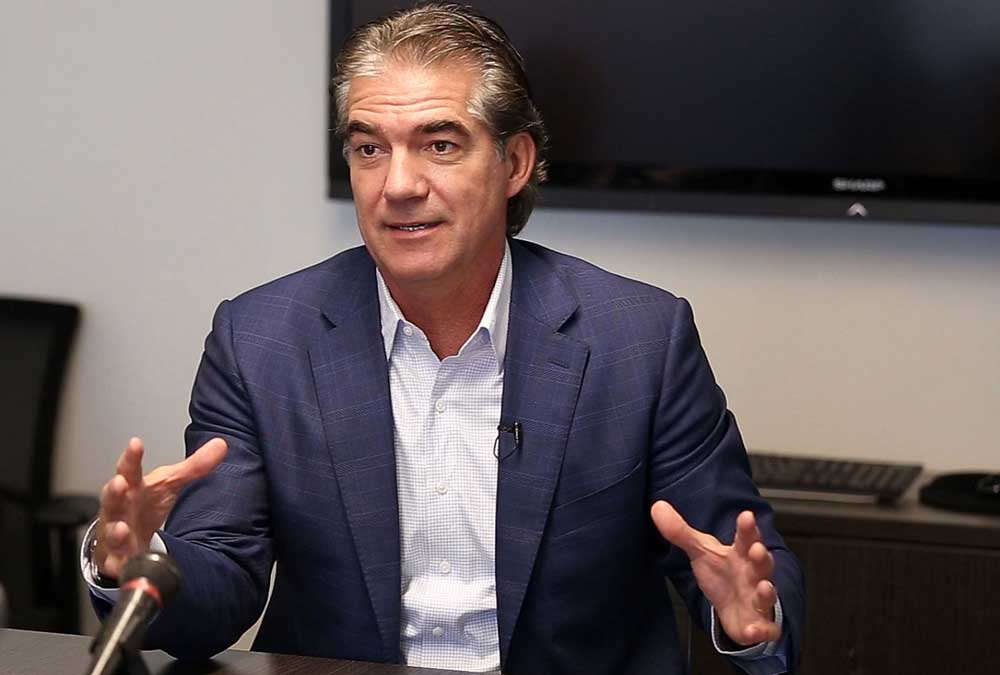SeaWorld CEO leaves position
Published 12:00 am Sunday, March 4, 2018

- Manby
SAN DIEGO — SeaWorld Entertainment CEO Joel Manby is stepping down after failing to deliver a rebound in sliding attendance and revenues that have dogged the company years after the release of the anti-animal captivity film “Blackfish.”
The Tuesday morning announcement came on the same day as the release of fourth quarter earnings, which, in a replay of past quarterly reports, revealed a continued slump in revenues and a nearly 3 percent drop in attendance.
Trending
Taking Manby’s place as interim CEO will be Chief Parks Operations Officer John T. Reilly, 49, who previously had been president of SeaWorld San Diego and has been with the company for more than 30 years. He will be getting a $30,000 increase in pay, according to a filing with the Securities and Exchange Commission.
“The Board agreed that this transition plan is the right approach to advance the company’s progress and create value for all our important stakeholders,” said Donald Robinson, SeaWorld’s lead independent director in a statement.
It is not clear, though, whether it was Manby’s decision alone to leave the company or if it was driven more by the board of directors.
SeaWorld board Chairman Yoshikazu Maruyama, asked in an earnings call Tuesday morning about the reason for Manby’s departure, did not really answer that question, but offered high praise for the long-time theme park executive.
“Joel truly is an inspirational leader. He has big vision and big ideas,” said Maruyama, who heads the American operation for Zhonghong Group, the Chinese company that last year purchased investment firm Blackstone Group’s 21 percent stake in SeaWorld.
“I think that he also, from the very beginning of his tenure, has wanted to make sure there would be a smooth transition in leadership. I think he believes he has trained and mentored a large group of management members here. He feels there is significant bench strength and it is time to give them the opportunity to exert their leadership. He would not do so in an environment in which the business was confronted with adversity.”
Trending
SeaWorld spokesman Travis Claytor said that the company would not be making Manby or Reilly available for interviews on Tuesday.
Manby, who joined the Orlando-based company three years ago, agreed that “this is the right time to identify a new CEO as the company enters its next phase of intensified focus on execution and growth,” the company said in its Tuesday news release.
There are some analysts, though, who believe that it was precisely the wrong time to be making such a huge change.
Even though the company’s fourth quarter results were not as disappointing as in past quarters, key financial metrics remained down, and attendance in 2017 — 20.8 million — was the lowest since 2010.
“The idea that things are now stable and this seemed like a great time for a transition, I beg to differ,” said James Hardiman, an analyst with Wedbush Securities. “This is a bad time for a transition because it’s a pivotal time for the company. There have been four straight years of significant decline, and if they have a fifth they’re in a lot of trouble. The competitive landscape is becoming a lot more treacherous, most notably with Disney stepping up their efforts.
“There are some things to like about the fourth quarter, but people who are excited about this are missing the forest through the trees.”
Rumors of a potential SeaWorld sale, which surfaced last year and continue to persist, were raised during the earnings call with analysts, but Maruyama would not comment on the possibility.
Despite continued marketing campaigns to burnish the company’s image and a stunning announcement two years ago that SeaWorld would end the captive breeding of its killer whales, the company has been unable to show positive results.
In Tuesday’s earnings announcement, SeaWorld reported that attendance fell nearly 3 percent during the final quarter of 2017 and revenues were down almost 1 percent compared to the same period a year earlier. For all of 2017, 1.2 million fewer people visited SeaWorld’s 12 parks, a decline of 5.5 percent, the company reported.
Seeking to put a more upbeat spin on its financial results, SeaWorld noted that trends so far this year are positive when compared to last year, with increases in season pass sales and total attendance, “led by significant increases in both metrics at SeaWorld San Diego.”
It also noted that despite the attendance decline during the quarter, revenue per capita rose 2 percent to $62.32 owing to higher ticket prices and spending within the parks.
SeaWorld has sought to revive performance by continuing to introduce new rides and attractions and boasts that it is offering up “one of the best new product line-ups in the company’s history with 15 new rides.” In San Diego this year, the park will debut its Electric Eel coaster, which is advertised as its tallest and fastest coaster yet.
Beyond its financial woes, SeaWorld is being sued by investors who accuse the theme park company of failing to acknowledge the fallout from “Blackfish.” It also is being investigated by the Department of Justice and SEC, which are focusing on executives’ disclosure and pubic statements about the impact of the 2013 documentary and trading in the company’s securities.
SeaWorld’s board said Tuesday it has hired an executive search firm to help it find a successor for Manby, who previously served as president of family-owned Herschend Enterprises, which includes among its attractions Dollywood.
According to an SEC filing, Manby will be entitled to severance pay.








